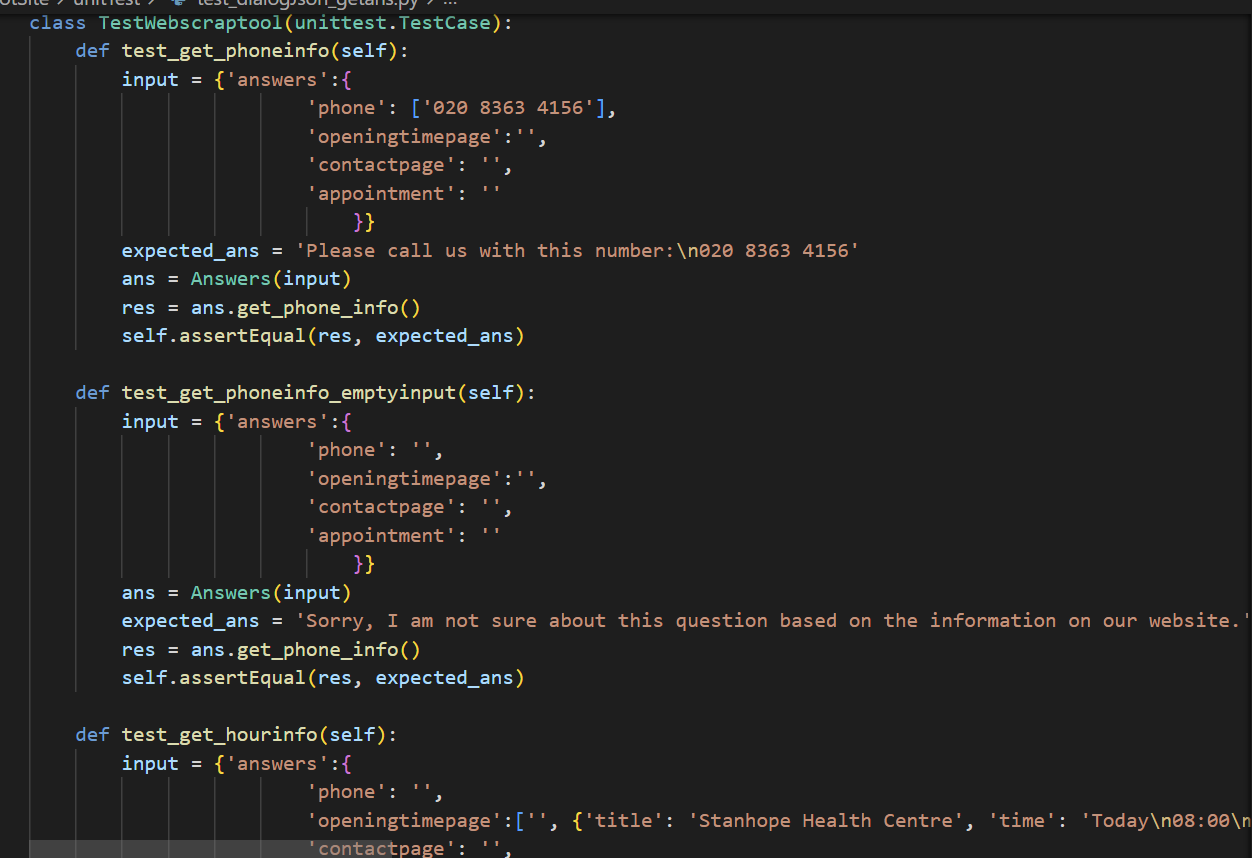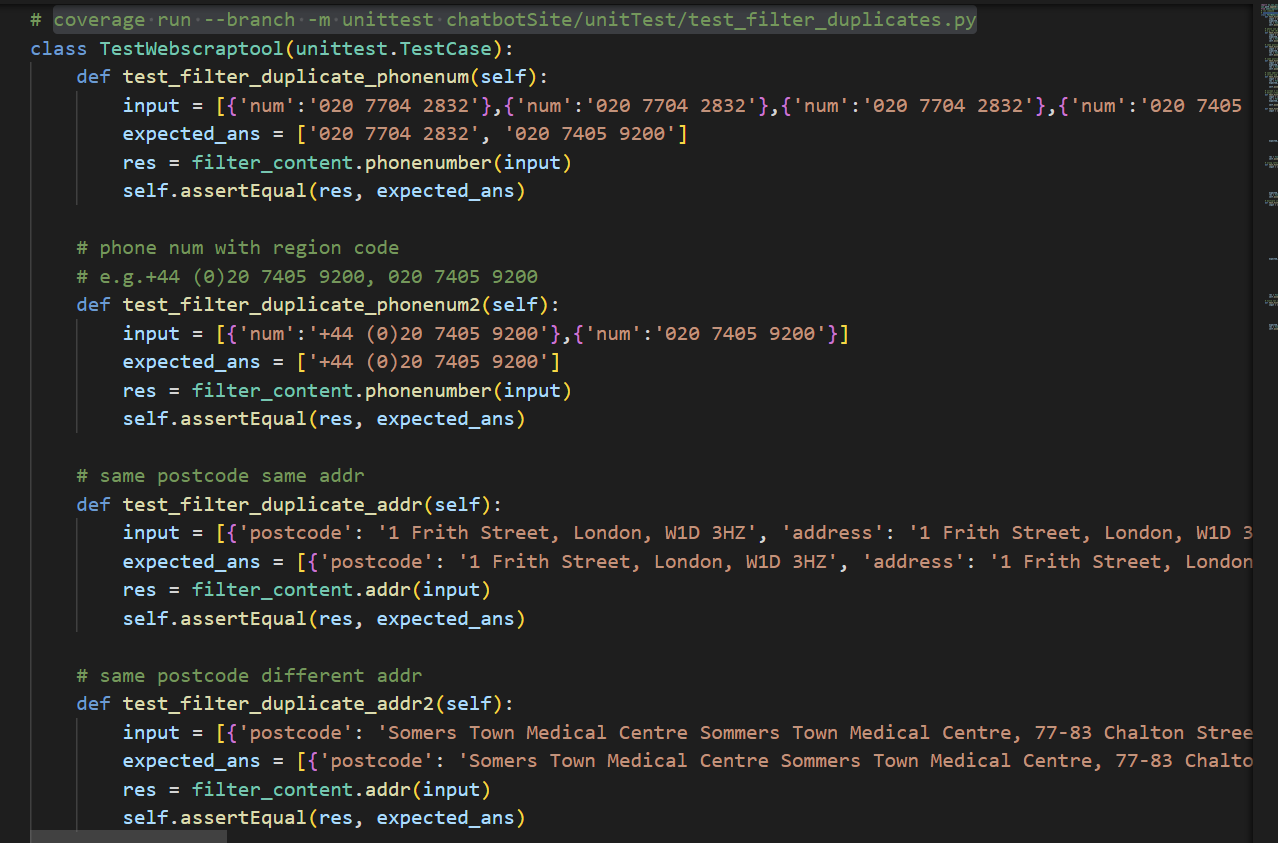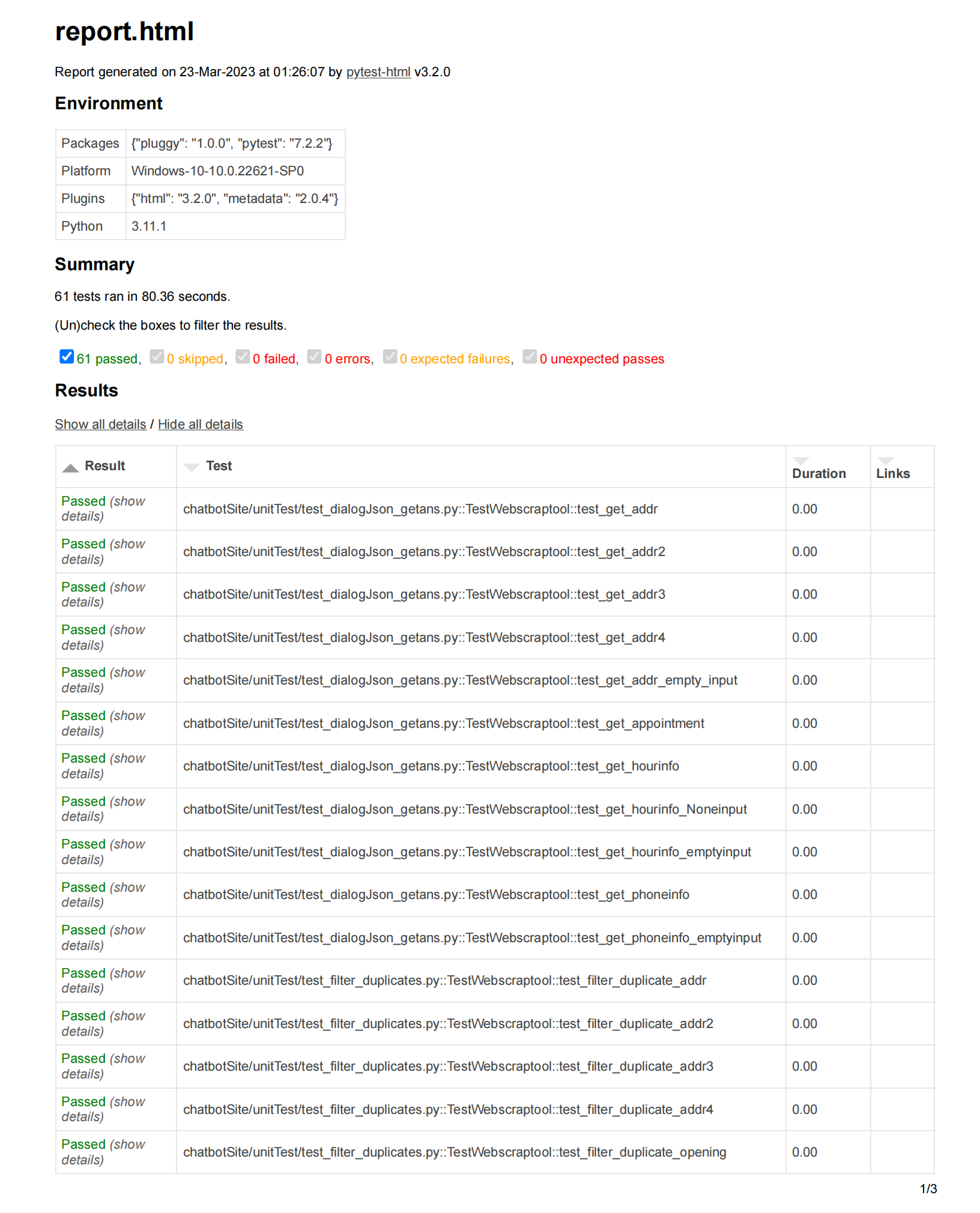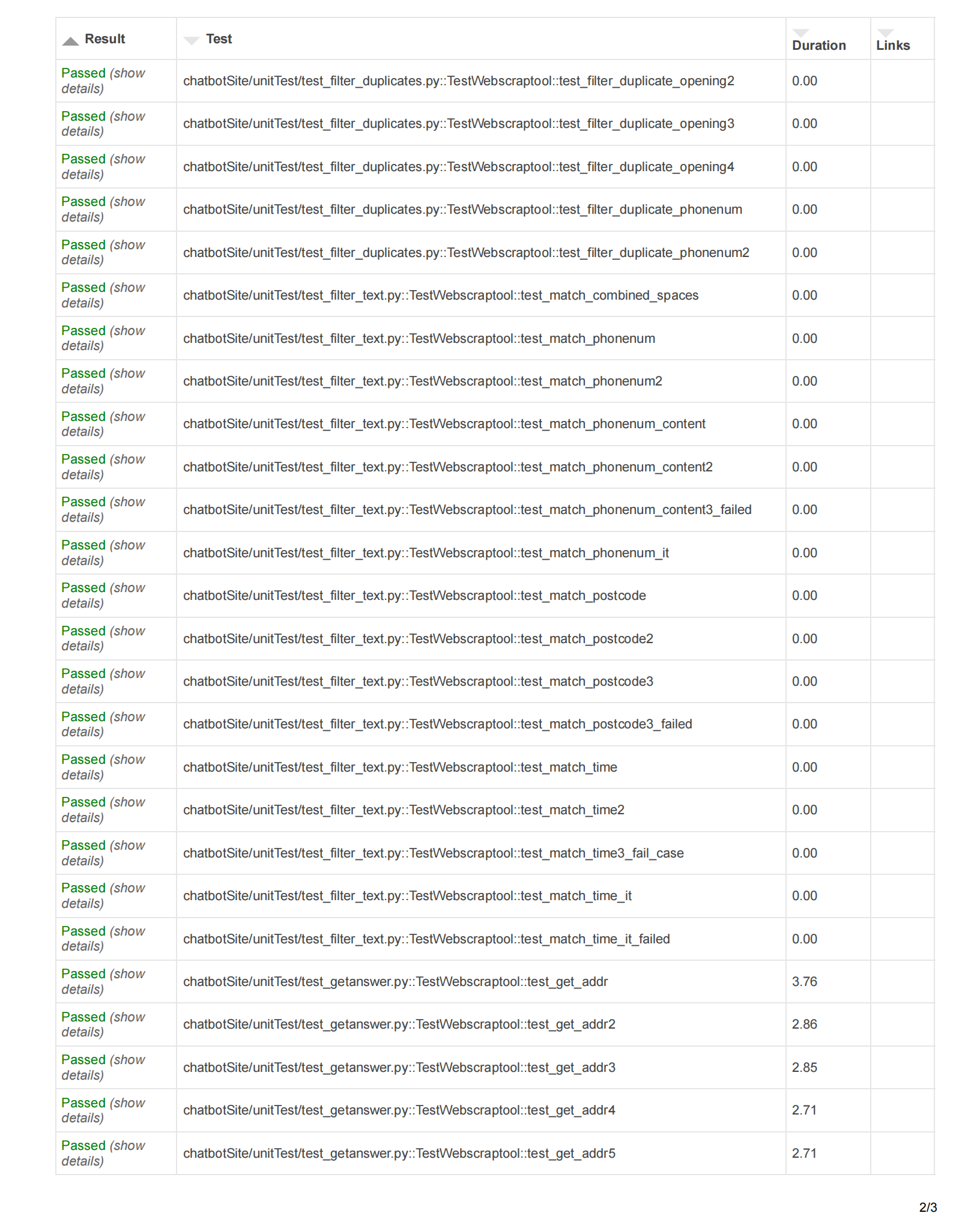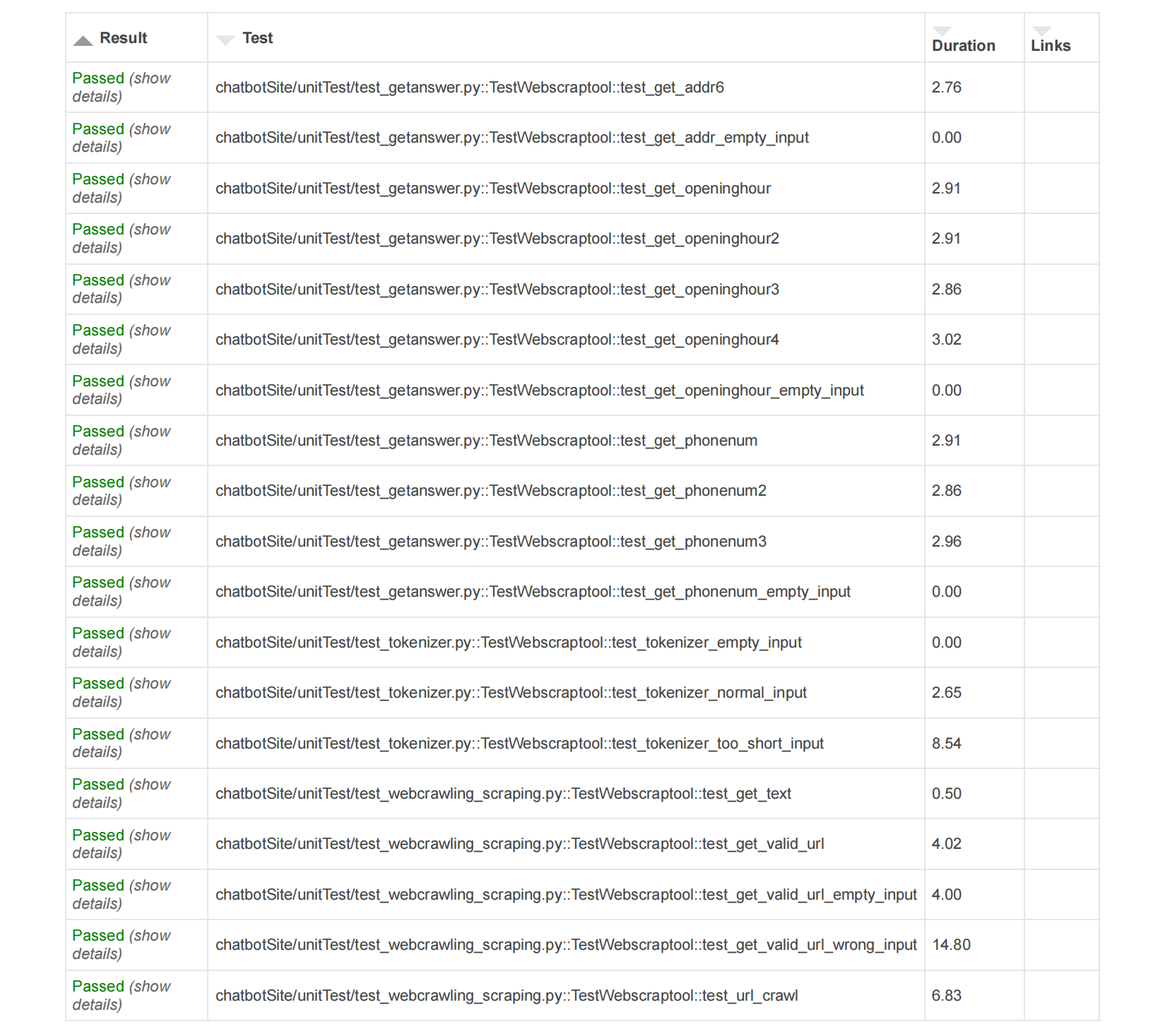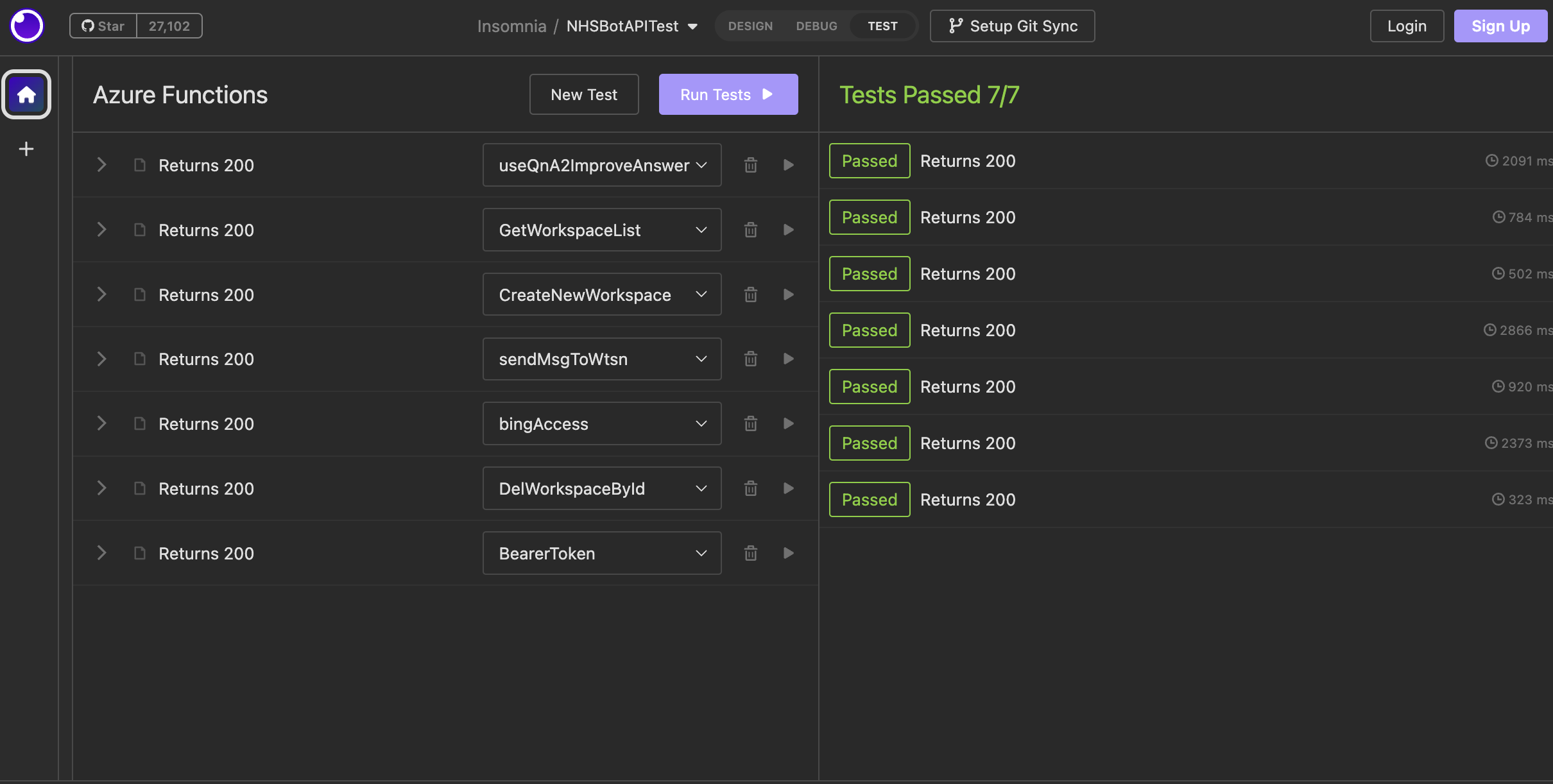Testing Strategy
Because NHS Auto-chatbot is a client-side application, it is crucial to run a wide range of
tests on
it to make sure it is stable, usable, and functional. This guarantees that it will live up
to the requirements of the client and any other users of the application.
Testing Scope
1. We must take into account the unpredictable behaviours of people since our chatbot will
be used by people (IT admin, teenage patients, and elderly patients). For instance, typos.
Therefore, we thoroughly tested NHS Auto-chatbot to make sure it can handle and respond to
any
uncertain actions correctly and, where possible, provide clear guidance and responses.
2. Wide-ranging features offered by NHS Auto-chatbot include answering predefined & general
questions
and obtaining information from the specific NHS trust website. Therefore, it is essential to
thoroughly test each of these features to make sure the programme is reliable and that users
can easily interact with it.
3. The goal of NHS Auto-chatbot is to assist NHS IT admins in creating their own chatbot so
that NHS
patients can use it. As a result, we tested the application to make sure it satisfies their
needs and requirements.
Testing Methodology
1. Unit Testing was used to test NHS Auto-chatbot's built-in features.
2. Integration Testing was used to test the effectiveness and reliability of chatbot's
dialogues.
3. User Acceptance Testing was used to evaluate the NHS Auto-chatbot's UI and design.
4. API testing was used to test the interactions between different components.
Testing Principle
We carried out various tests as the NHS Auto-chatbot application was being developed. In
order to make
sure the system behaved correctly and as expected, we continuously wrote and tested it using
various inputs. Any tests that failed were looked into, and any bugs discovered were fixed
right away. We created various unit, integration, API, and system tests after completing the
functionality to test as much of the code as we could.
